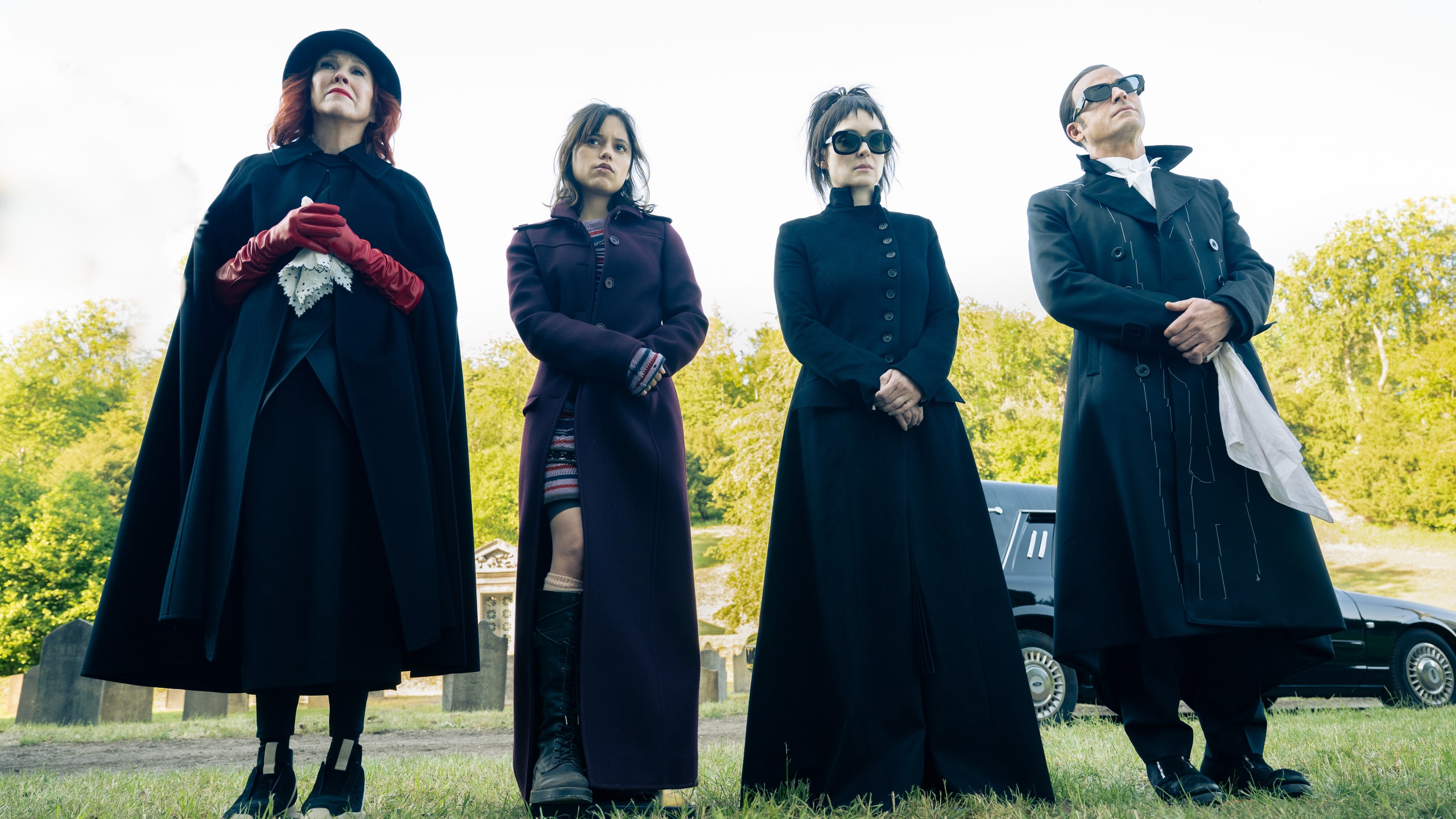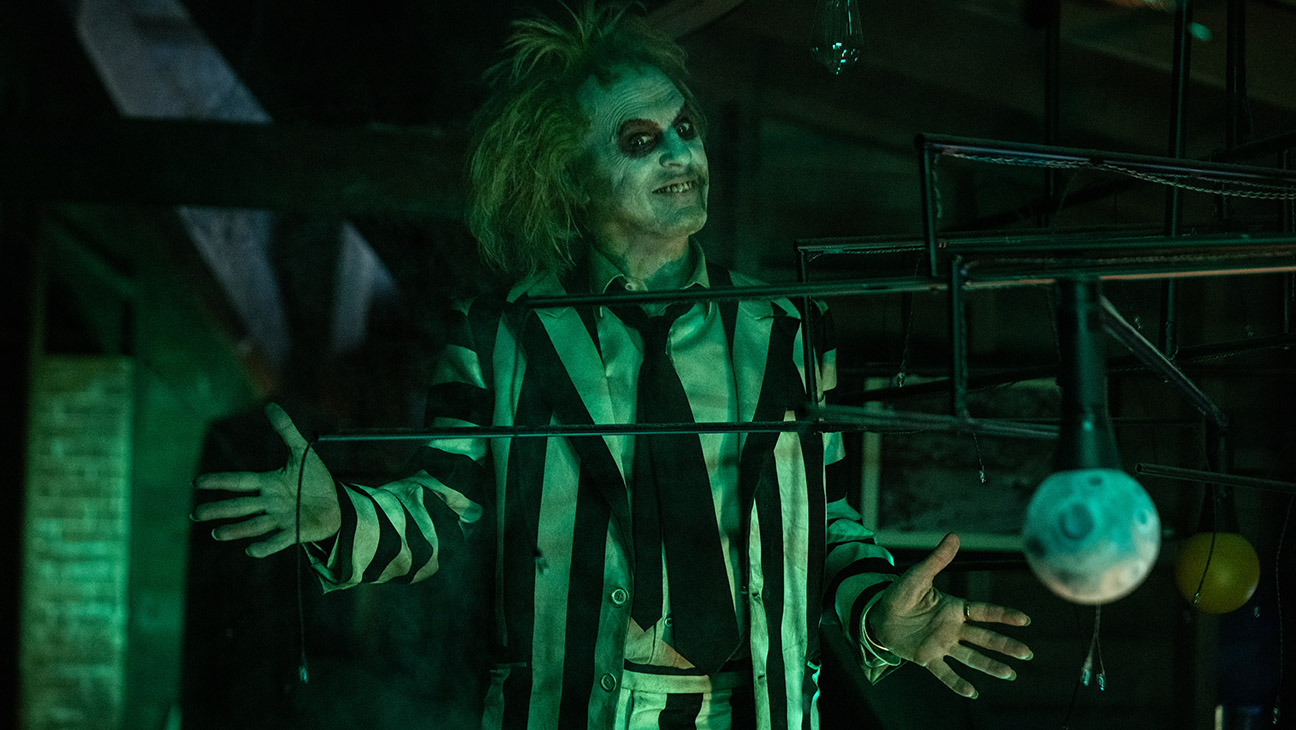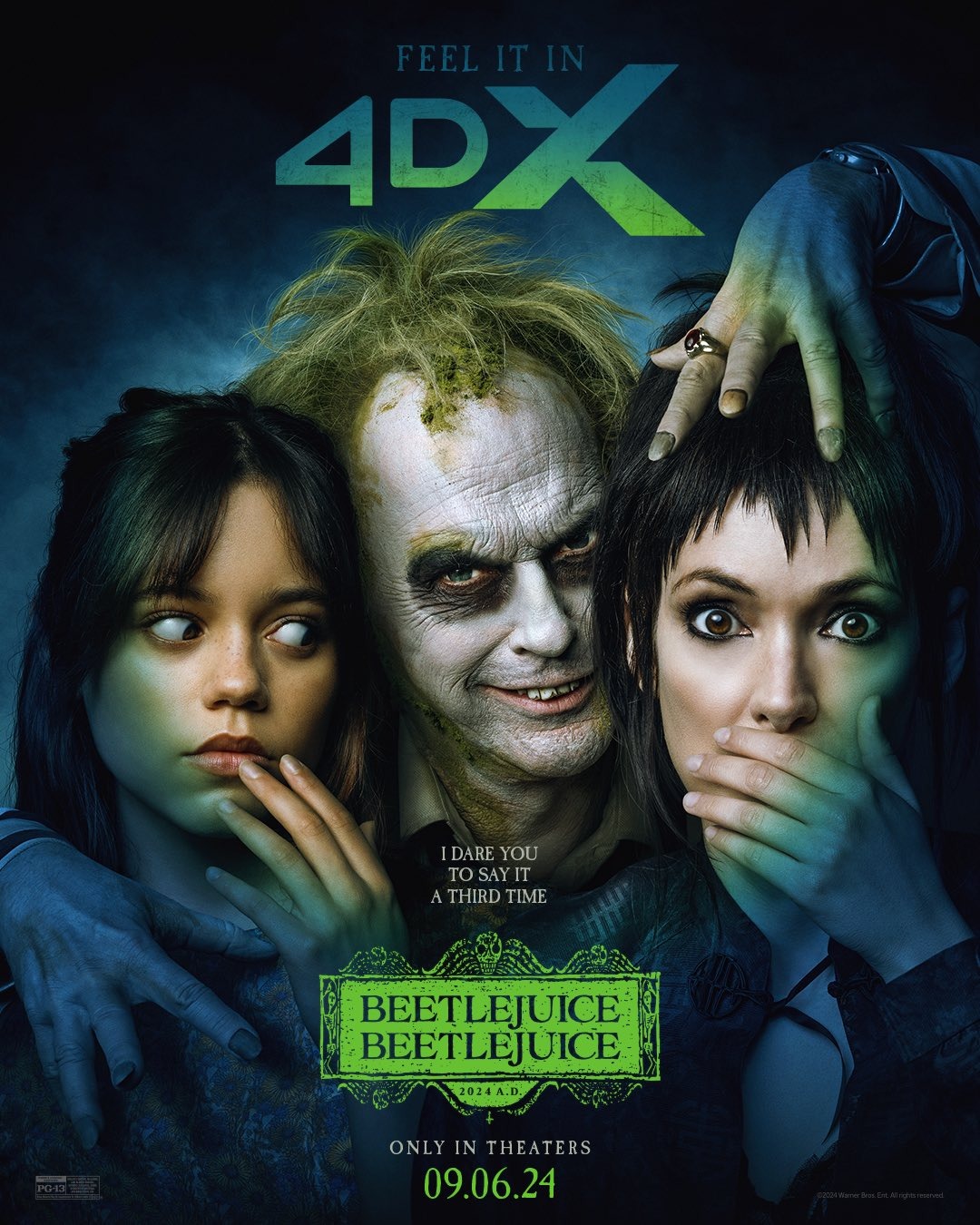‘Beetlejuice Beetlejuice’ Review: Tim Burton’s Legacy Sequel is a Handmade Success

It’s been nearly four decades since audiences were promised a follow-up to Tim Burton’s freakishly heartwarming breakthrough about a troublesome bio-exorcist, the ghosts who hired him, and the humans who he traumatized. After countless starts and stops over the years, Warner Brothers has at least unleashed Beetlejuice Beetlejuice, a direct sequel to their 1988 horror-comedy classic. But was it worth the wait?
Fans, myself included, have been watching with broken hearts as over the years Burton seemed to lose his creative luster. Since the phenomenal Big Fish was caught and released in 2003, the director’s output has consisted of lifeless, over-bloated, CGI snooze fests that have sorely lacked the spark and handmade imagination of his earlier works. Charlie and the Chocolate Factory, Alice in Wonderland, Dark Shadows, Miss Peregrine’s Home for Peculiar Children, and Dumbo were all creative disasters, and many of us worried the controversial director had either given up or, worse, lost the spark. And so I entered Beetlejuice Beetlejuice with tempered expectations.
The first signs of life in this hotly anticipated homecoming arrive when the movie opens on Lydia Deetz, once again played by Winona Ryder. She addresses the live studio audience for Ghost House, a supernatural encounters talk show/reality program she hosts. The name is a fun callback to the asinine title IRL execs almost forced upon Beetlejuice in 1988. Lydia herself has become a minor celebrity since the first film’s events, and she’s been using her abilities to communicate with the dead to both help the living and make one for herself.

Instead of the modern (and always irritating) cliche of having Lydia host a podcast or a live stream, the writers have her hosting an old-school talk show on a gorgeously gothic soundstage. Small choices like these signal an understanding of the narrative world the creatives are working in. Even better yet, Ryder’s subtle mannerisms and character choices are uncannily perfect as she revives Lydia with such authenticity and ease it’s like she’d been there the whole time.
Soon, we’re introduced to Lydia’s boyfriend and producer, Rory, who played Justin Theroux (American Psycho), a smarmy social villain who’s fun to watch yet who never raises the emotional stakes. When Lydia’s artist stepmother, Delia, informs Lydia of her father’s sudden death, they must return to the quaint town of Winter River for the funeral and to sell the iconic haunted house that brought them all together 37 years ago. To complicate matters further, this unconventional family stops to pick up Lydia’s emotionally estranged daughter from boarding school en route to the funeral.
The gloomy teenage Astrid is played by the impeccably cast Jenna Ortega (Wednesday), who has been cultivating her own Gen-Z Winona Ryder/Christina Ricci branding throughout her short but illustrious career. However, I was worried about the character’s introduction, as Astrid’s first few beats are two-dimensional. She’s unhappy with her mother, glib, and the usual array of ornery teen qualities that so many grown men apply with little understanding of what it’s like to be a teenage girl (obviously, Doctor). These cliches are set aside by the halfway point when Astrid finds herself in mortal peril, a skill that Ortega has honed impeccably during her career as a rising scream queen. By the finale, Ortega belongs in this zany universe as much as anyone else and proves herself as yet another excellent addition to a legacy horror franchise.
Catherine O’Hara is also back in her post-Schitt’s Creek glory. Her success in the past decade has provided her more of a starring role in this sequel, and it’s a delight to behold. She is by far the funniest part of a film packed with laughs. While her side quests, like many of the secondary plots in the movie, are somewhat inconsequential, she’s a burst of joy as she’s swung from scene to scene. One particularly scene-stealing moment occurs when Delia picks up Astrid from private school and makes a gloriously embarrassing entrance for poor Astrid. It’s charming stuff.

Aside from the solid ensemble, which includes a somewhat underutilized Michael Keaton in the title role, are the film’s visuals. After decades of dead-eyed CGI monstrosities, it seems like Burton and friends have finally taken note and delivered a spectacularly handmade, practically crafted spectacle of gorgeous, ghoulish mayhem. Almost all of the important effects have been applied practically and it shows. The deceased waiting in the afterlife’s familiar bureaucratic waiting rooms are hilariously nasty, as they were in the first film, and the other dimension is tactile and realistic. It looks as though you can reach through the IMAX screen and touch it; a privilege audiences are so often not afforded anymore when CGI effects take so much less time to apply. The success of Beetlejuice Beetlejuice is largely owed to the handcrafted direction its creatives painstakingly took.
The grande finale is downright breathtaking. It’s a Halloweentown-esque showdown in a spooky church, complete with a gigantic Gothic cake spinning and splattered by a localized thunderstorm. It’s fun and impressively imaginative, calling back to a time when Tim Burton regularly guided audiences into his uncanny amusement park of German Impressionistic storytelling.
In the chaos, however, some of the narrative for the sequel gets lost early on. There are at least three unnecessary side stories that are never fulfilled or ever feel consequential in any real way. The sorest of these thumbs is Monica Bellucci’s femme fatale of death, Delores. The film’s greatest failure is the unfulfilled promise of this nearly iconic villain. What I loved about her potential was how scary she had the opportunity to be.

This sequel never shies away from its horror, to the point where the audience would let out an audible shared gasp during a particularly heightened moment of macabre. Delores is the only character capable of raising the stakes, as she can suck the life out of ghosts and kill them. Permanently. This device has a similar dangerous quality to the dead ghosts in the first film. A death beyond death is a frightening and ingenious idea that falls flat here when she’s left with nothing to do but saunter down hallways looking for Beetlejuice. Without giving much away, the finale did insulate the possibility that her story is not over, and I hope that if Beetlejuice Beetlejuice Beetlejuice ever sees the light of day, Delores is avenged.
In the end, this legacy sequel was a surprisingly enjoyable experience that ultimately surpassed my expectations and then some. A commitment to practical effects, an excellent ensemble cast led by MVP Winona Ryder, and an excess of Halloween-time ghoulish mayhem resulted in a Beetlejuice sequel that doesn’t reach the heights of the original but one that obviously understood its assignment.
-
Beetlejuice Beetlejuice
Summary
What’s most important is that its special effects are both practical and imaginative. And, while its script juggles too many unnecessary side plots, its heart is always in the right place: on the floor, in a pool of unidentifiable goop.
